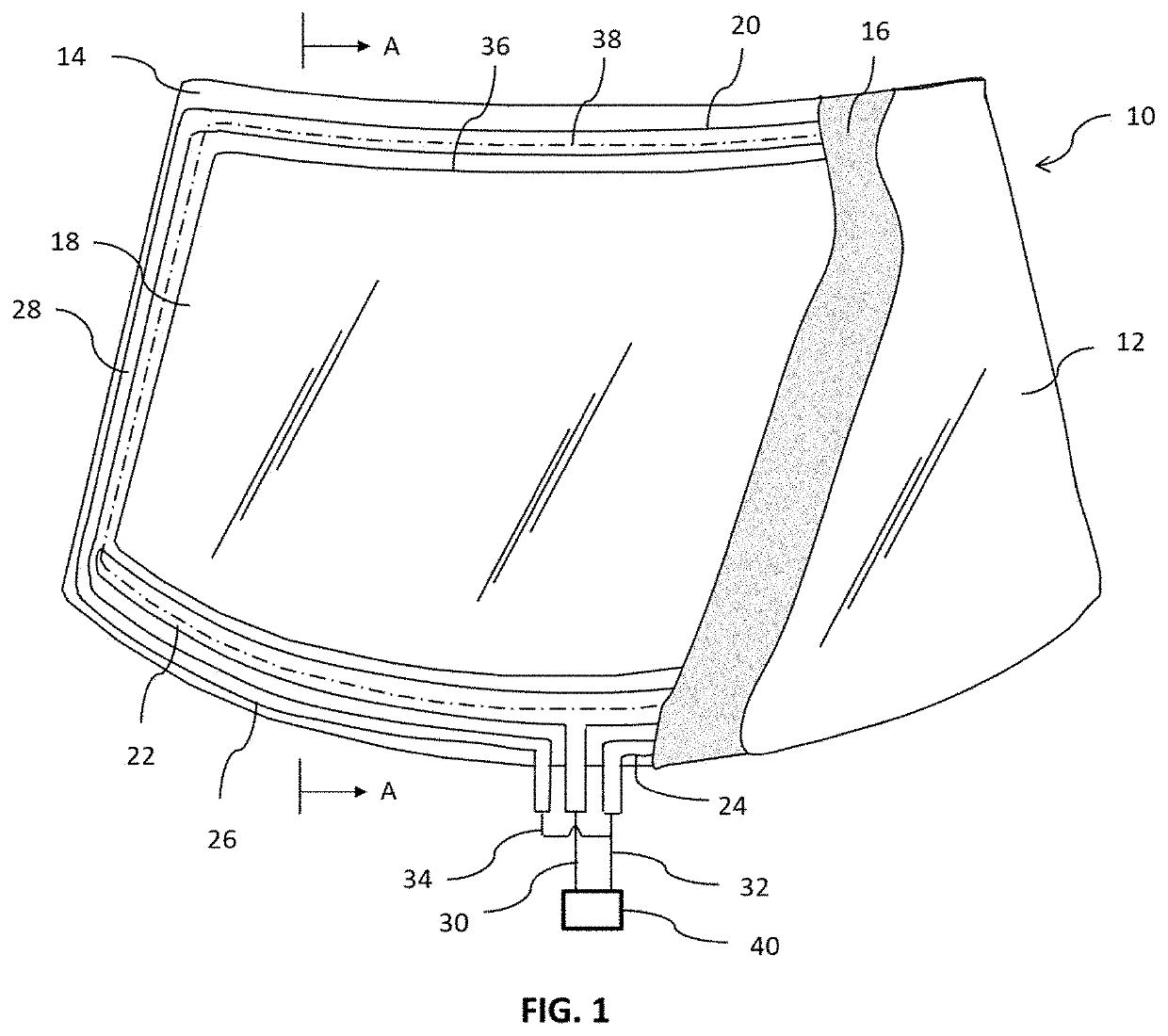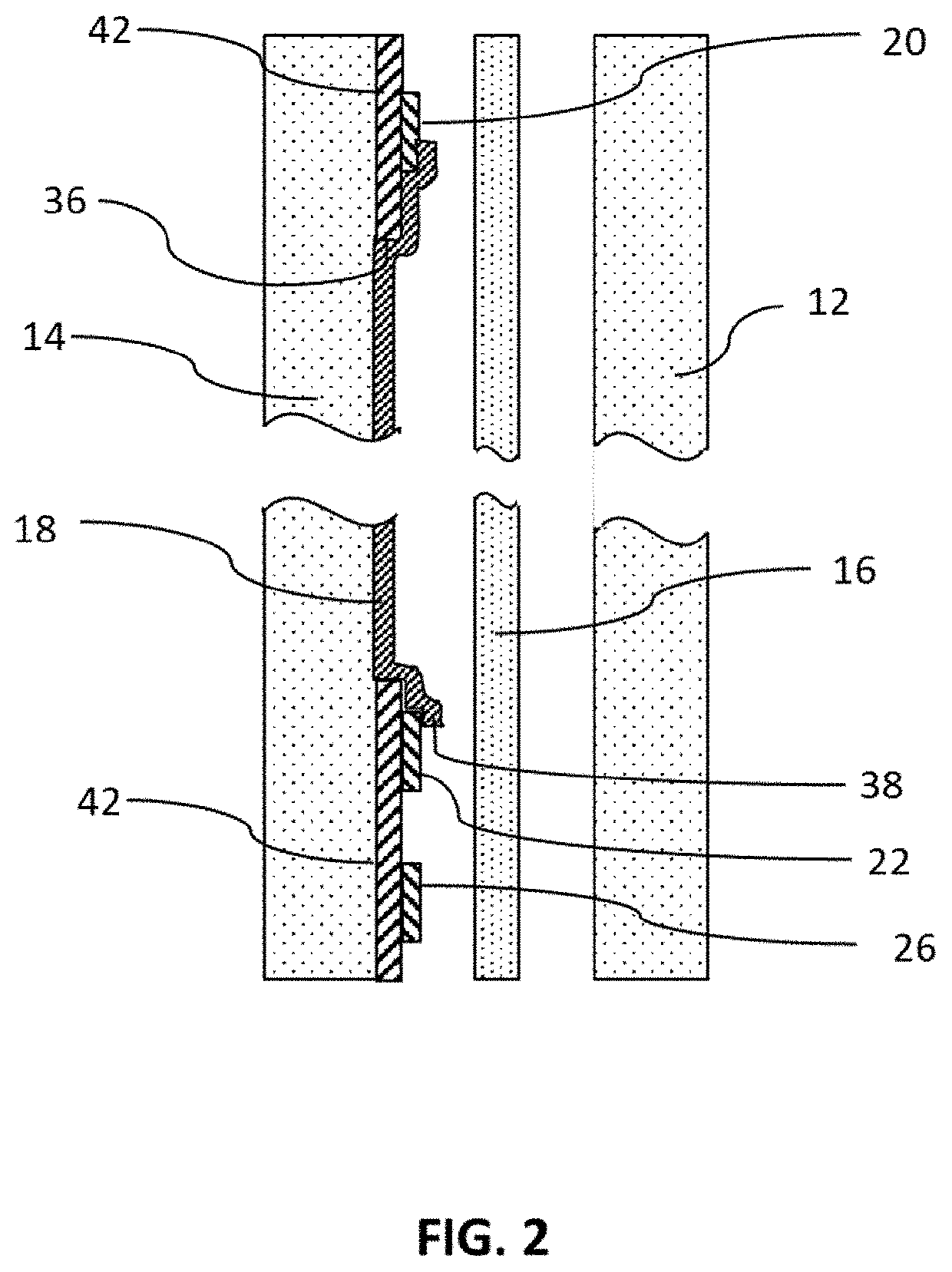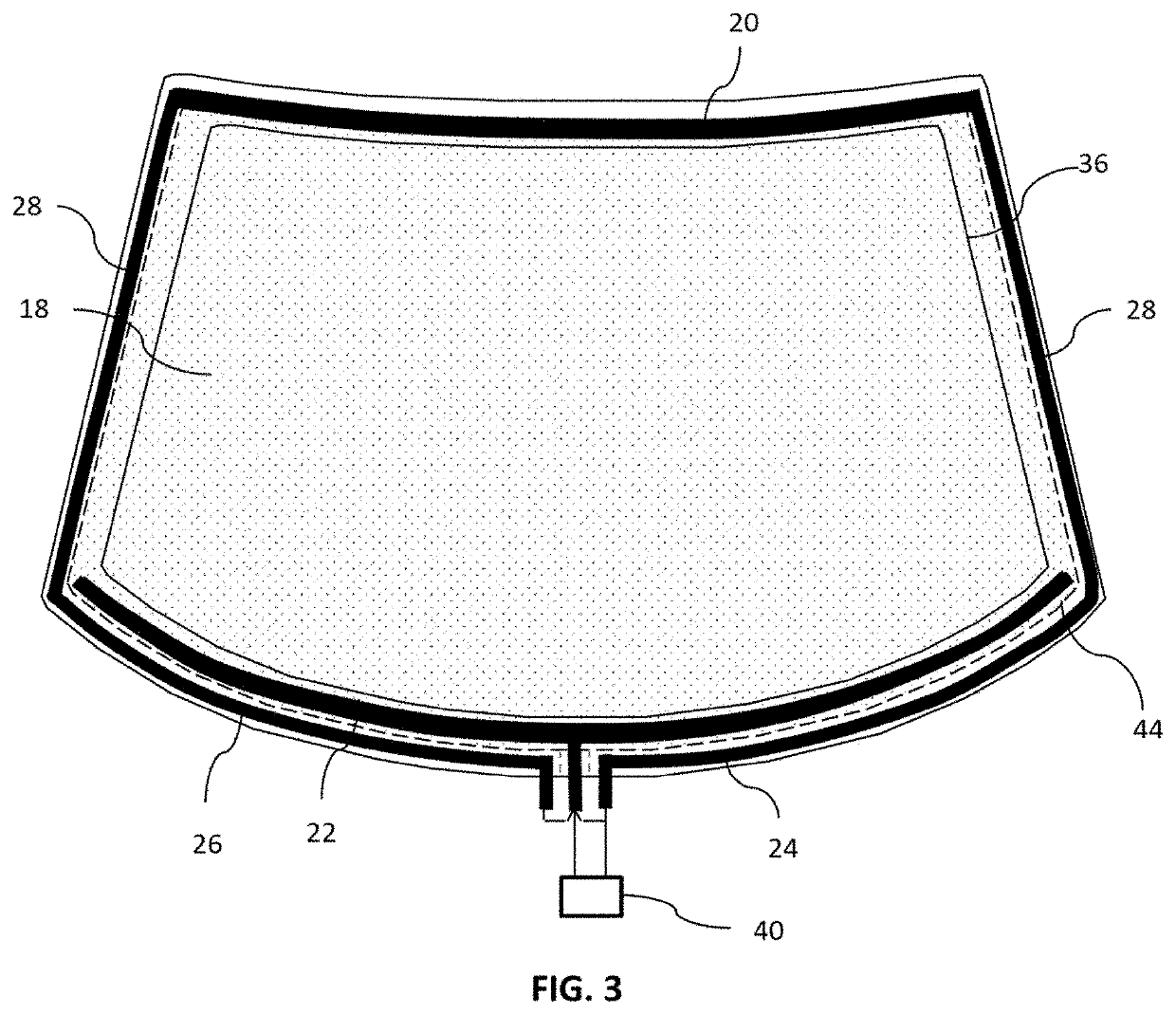Heatable vehicle glazing with antennas
- Summary
- Abstract
- Description
- Claims
- Application Information
AI Technical Summary
Benefits of technology
Problems solved by technology
Method used
Image
Examples
Embodiment Construction
[0041]FIG. 1 shows a plan view of a transparent windshield 10 incorporating features of the presently disclosed invention. Window 10 is a laminated vehicle windshield formed of outer and inner glass plies 14 and 12 that are bonded together by an interposed layer 16, preferably of a polyvinyl butyral, polyvinyl chloride, polyurethane or similar material. Outer glass ply 14 defines an outer surface (conventionally referred to as the number 1 surface) on the outside of the vehicle and an inner surface (conventionally referred to as the number 2 surface). Inner glass ply 12 defines an outer surface (conventionally referred to as the number 3 surface) on the inside of the glazing and a surface (conventionally referred to as the number 4 surface) that faces toward the interior of the vehicle and is the internal side of window 10. Interlayer 16 is located between surface number 2 and surface number 3.
[0042]As shown in FIG. 2, the window glass 10 may include an obscuration band 42 formed by...
PUM
 Login to View More
Login to View More Abstract
Description
Claims
Application Information
 Login to View More
Login to View More - R&D
- Intellectual Property
- Life Sciences
- Materials
- Tech Scout
- Unparalleled Data Quality
- Higher Quality Content
- 60% Fewer Hallucinations
Browse by: Latest US Patents, China's latest patents, Technical Efficacy Thesaurus, Application Domain, Technology Topic, Popular Technical Reports.
© 2025 PatSnap. All rights reserved.Legal|Privacy policy|Modern Slavery Act Transparency Statement|Sitemap|About US| Contact US: help@patsnap.com



